Introduction
Swiss chard is a popular and nutritious leafy green vegetable that is packed with vitamins A, K, C, magnesium, potassium and iron. It is a form of beet without the enlarged taproot and is closely related to both beets and spinach.
Hydroponics is a method of growing plants without soil by submerging the roots in a nutrient-rich water solution. With hydroponics, plants typically grow much faster and produce higher yields since their roots have constant access to water, oxygen, and nutrients.
So can i grow Swiss chard hydroponically? Yes, Swiss chard is an excellent vegetable to grow hydroponically! By providing Swiss chard with the optimal nutrient solution and environment, hydroponic systems can produce very high yields and grow Swiss chard faster than in soil.
This comprehensive guide will provide tips and steps for successfully growing Swiss chard hydroponically, from choosing varieties to setting up your system and caring for your plants.
Benefits of Growing Swiss Chard Hydroponically
- Faster growth rate – With direct access to water and nutrients, hydroponic Swiss chard grows significantly faster than soil grown plants. You can expect up to a 30% improvement in growth rate.
- Higher yields – Hydroponic systems can produce up to 25% higher yields per square foot compared to conventional gardening. More efficient access to nutrients and optimized conditions lead to higher productivity.
- Avoid soil-borne diseases – Hydroponics eliminates problems with soil-borne diseases, fungi and pests. The sterile and controlled environment keeps plants healthier.
- Precise control over nutrients – You can carefully monitor and adjust the nutrient levels and pH in hydroponics. This leads to optimal nutrition for growth.
- Conserve water – Hydroponics uses up to 90% less water than soil culture since no water is lost to runoff or evaporation. Recirculating systems reuse nutrient solutions.
- Year round production – With climate controlled greenhouses, hydroponic Swiss chard can be grown year-round and is not limited by outdoor growing seasons.
Swiss Chard Varieties for Hydroponics
Many varieties of Swiss chard can be grown hydroponically. Some top options include:
- Fordhook Giant – This large leaf variety has white stems and dark green savoyed leaves. It is popular for its yield and tolerance to pests and disease.
- Bright Lights – This mix of colored stems includes gold, pink, orange, purple, red and white. Adds visual appeal.
- Ruby Red – Deep red stems and veins contrast nicely with dark green leaves. An attractive variety.
- Silverado – A white stemmed variety with silvery green leaves. Slow to bolt.
When choosing Swiss chard varieties for hydroponics, look for ones with large leaves, impressive stem colors, and good bolt resistance. The flavor is comparable between varieties when grown hydroponically.
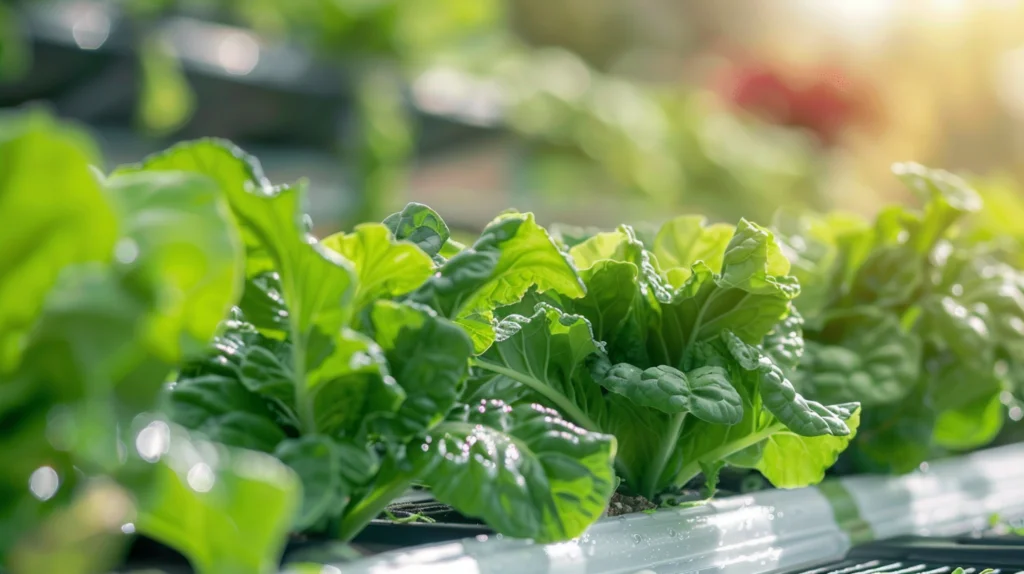
Set Up a Hydroponic System for Swiss Chard
Several types of hydroponic systems can successfully grow Swiss chard. Consider the following when choosing your system:
- Nutrient Film Technique (NFT) – Shallow streams of nutrient solution running through grow channels. Roots dangle in solution. Well-suited to Swiss chard.
- Deep Water Culture – Roots fully submerged in an aerated nutrient reservoir. A simple system but requires large tanks.
- Drip Systems – Nutrient solution dripped onto roots and media like perlite, vermiculite or coconut coir. Lower maintenance.
- Aeroponic – Roots misted with nutrient solution. Fast growth but requires more complex setup with misters.
Components needed for a basic hydroponic Swiss chard system:
- Reservoir tank for nutrient solution – 50-100 gallon capacity recommended
- Submersible pump – sized for your system needs
- Piping to distribute solution
- Grow channels, pipes or containers for plants
- Aeration with air stones/pump for proper oxygenation
- Grow lights like HID or LEDs
- pH and EC meters for monitoring
- Net pots, baskets or collars for seedlings
- Timer for controlling lighting and pumps
- Growing medium like perlite, vermiculite or coconut coir as needed
Follow manufacturer instructions closely when setting up any hydroponic systems. Getting all components working properly is key for success.
Nutrient Solution for Hydroponic Swiss Chard
The nutrient solution provides Swiss chard roots with all the essential macro and micronutrients required for healthy growth.
Macronutrients needed in larger amounts:
- Nitrogen (N) – fuels plant growth and green leaves
- Potassium (K) – vital for water regulation
- Phosphorus (P) – aids root, stem, leaf and flower development
- Calcium (Ca) – strengthens cell walls
- Magnesium (Mg) – part of chlorophyll for photosynthesis
- Sulfur (S) – helps with enzymes, chlorophyll and vitamins
Micronutrients needed in smaller amounts:
- Iron (Fe) – aids chlorophyll synthesis
- Manganese (Mn) – necessary for photosynthesis
- Zinc (Zn) – needed for growth hormones and enzymes
- Copper (Cu) – helps with electron transport and fertility
- Boron (B) – aids cell wall strength and development
- Molybdenum (Mo) – used by plants to form amino acids
Pre-mixed hydroponic nutrients tailored for leafy greens like Swiss chard are readily available. Follow label rates to get the proper concentration.
Maintain the nutrient EC at 1.2 to 1.6 mS/cm and the pH between 6 and 6.5 for optimal Swiss chard growth and flavor.
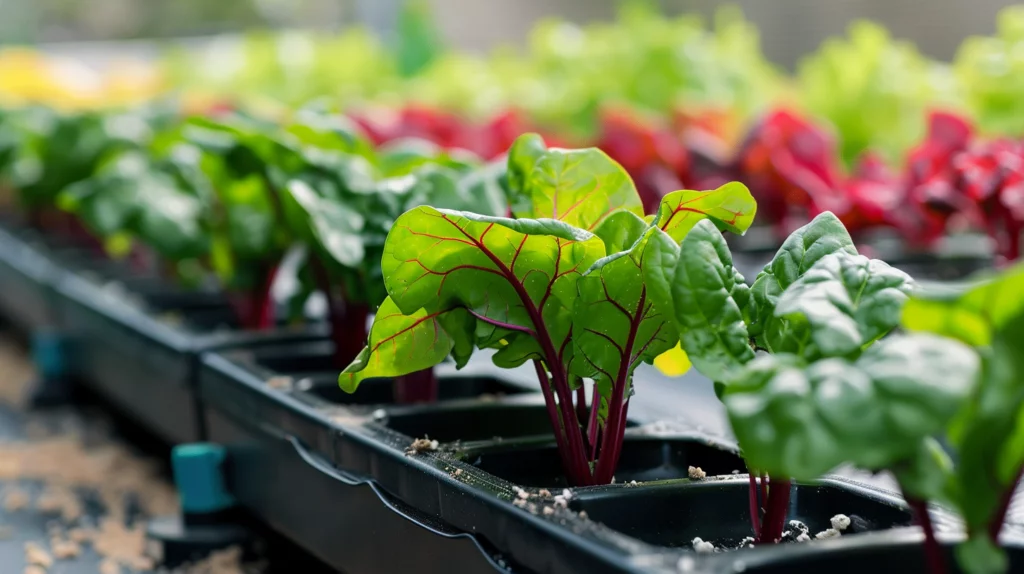
Planting and Caring for Swiss Chard
Swiss chard can be started from seed or transplanted as nursery starts into the hydroponic system. Soak seeds in water for 24 hours before planting to increase germination rates.
When seedlings develop their first true leaves, transplant them into the hydroponic system in net pots or grow plugs. Space plants 8-12 inches apart to allow adequate light penetration and air circulation.
Ideal growing conditions for hydroponic Swiss chard:
- Temperature – 65-75°F during the day, and 55-65°F at night
- Light – At least 10-14 hours under grow lights or sunlight
- Humidity – 40-60% relative humidity
Ensure lights are kept close to the tops of the plants as they grow. Prune leaves as needed to allow light deeper into the canopy.
Swiss chard is a cut and re-grow crop. Harvest outer leaves when they reach 6-8 inches long by cutting the stem 2 inches above the soil. New leaves will continue to grow.
Common Problems and Solutions
Even in hydroponics, Swiss chard can encounter a few issues. Here are some common problems and troubleshooting tips:
- Nutrient deficiencies – Identify deficiencies by leaf discoloration and treat with proper nutrients.
- Tip burn – Caused by a calcium shortage. Add calcium nitrate or adjust pH.
- Root rot – Excess water can cause rotting roots. Allow more aeration.
- Algae growth – Block light to reservoirs. Ensure lids are closed.
- Mold – Improve air circulation. Decrease humidity and space plants.
- Insects – Treat plants with organic insecticidal soap or introduce beneficial insects.
Conclusion
Swiss chard is an excellent choice for hydroponic farming. The faster growth rate, higher yields, and ability to grow year-round makes hydroponics a great method to supply your kitchen with fresh chard. With the right system setup, nutrient solution, and environment – your hydroponic Swiss chard will thrive! The techniques covered in this guide will set you up for success growing Swiss chard hydroponically.
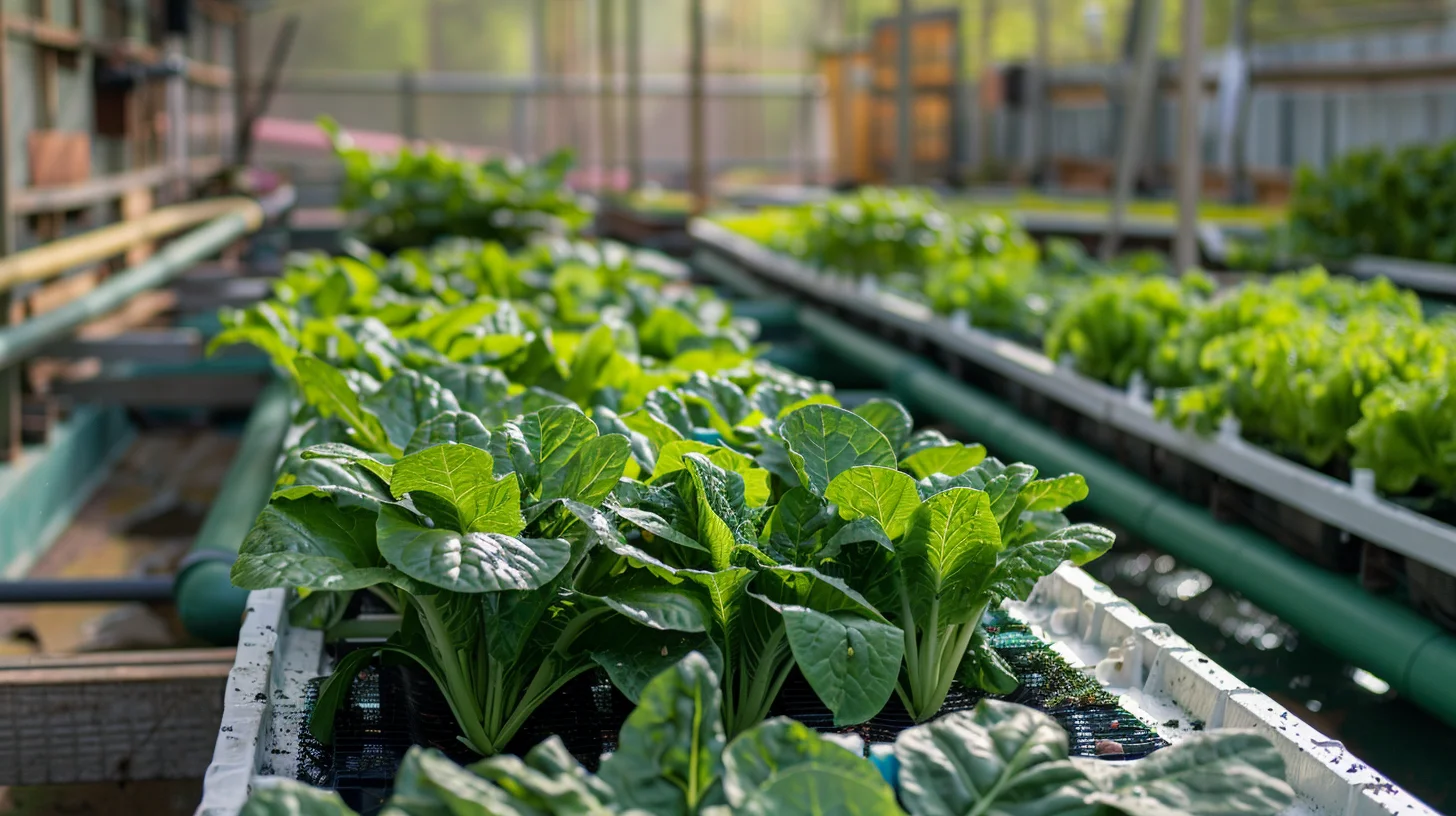
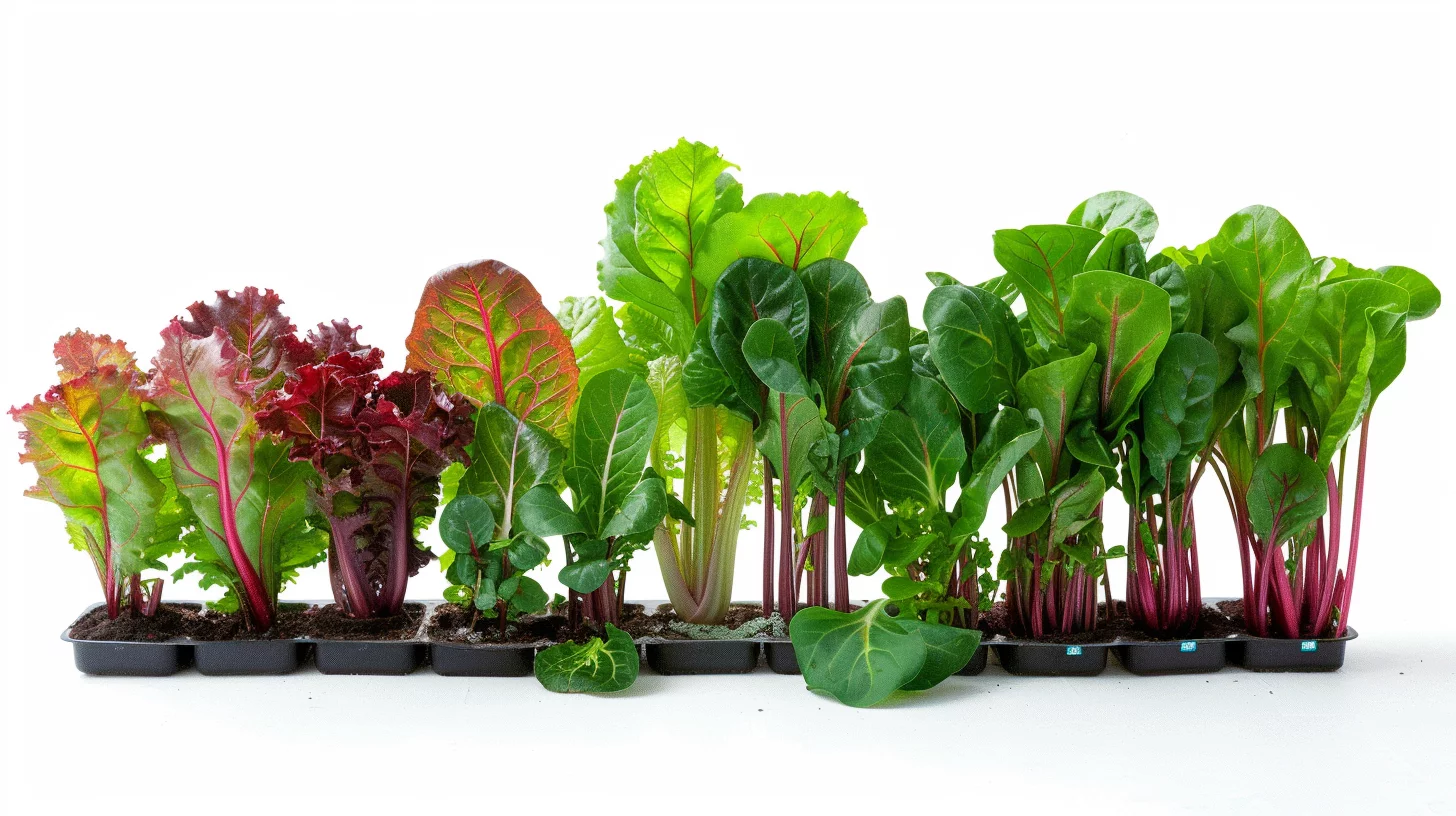
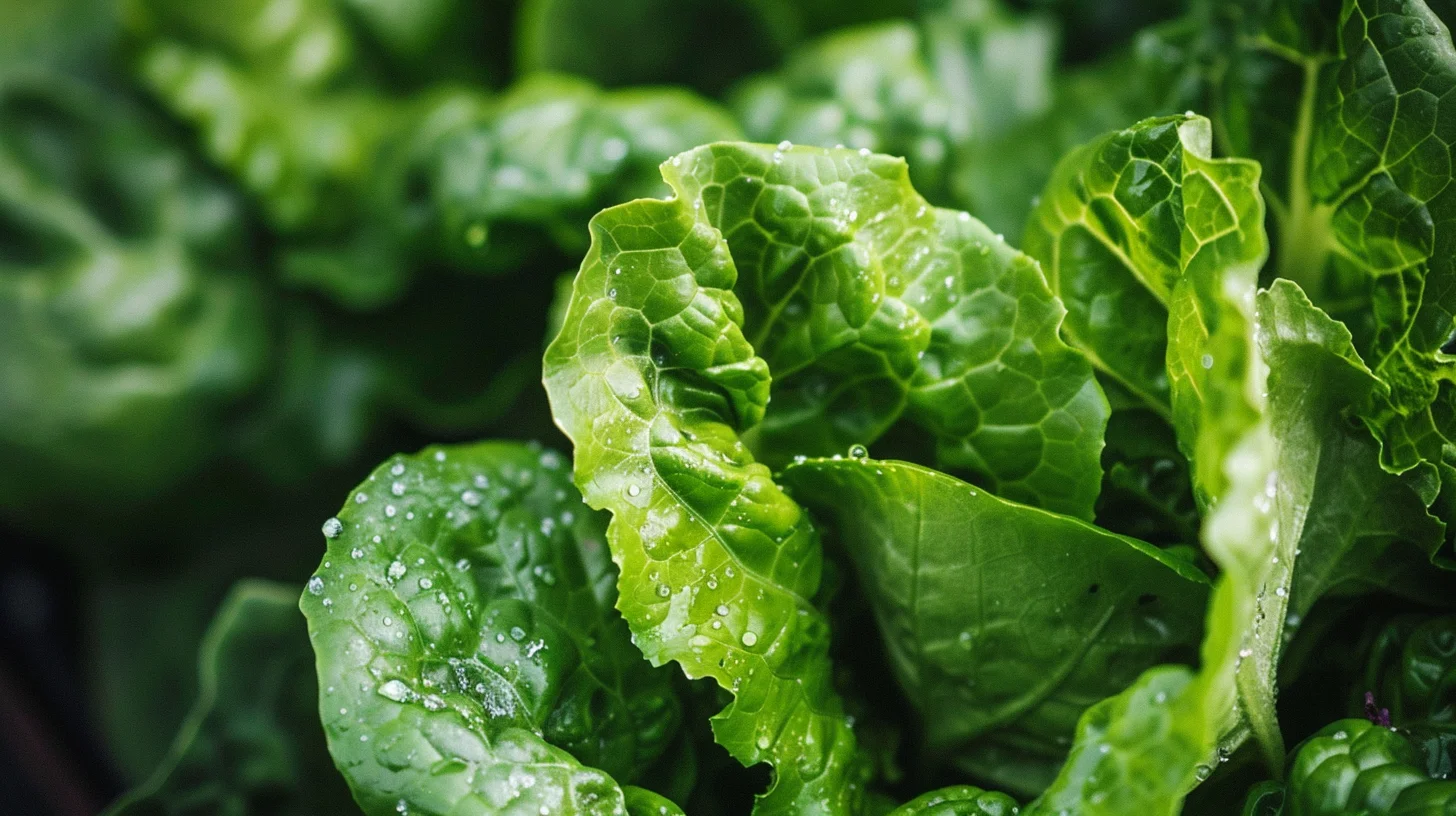
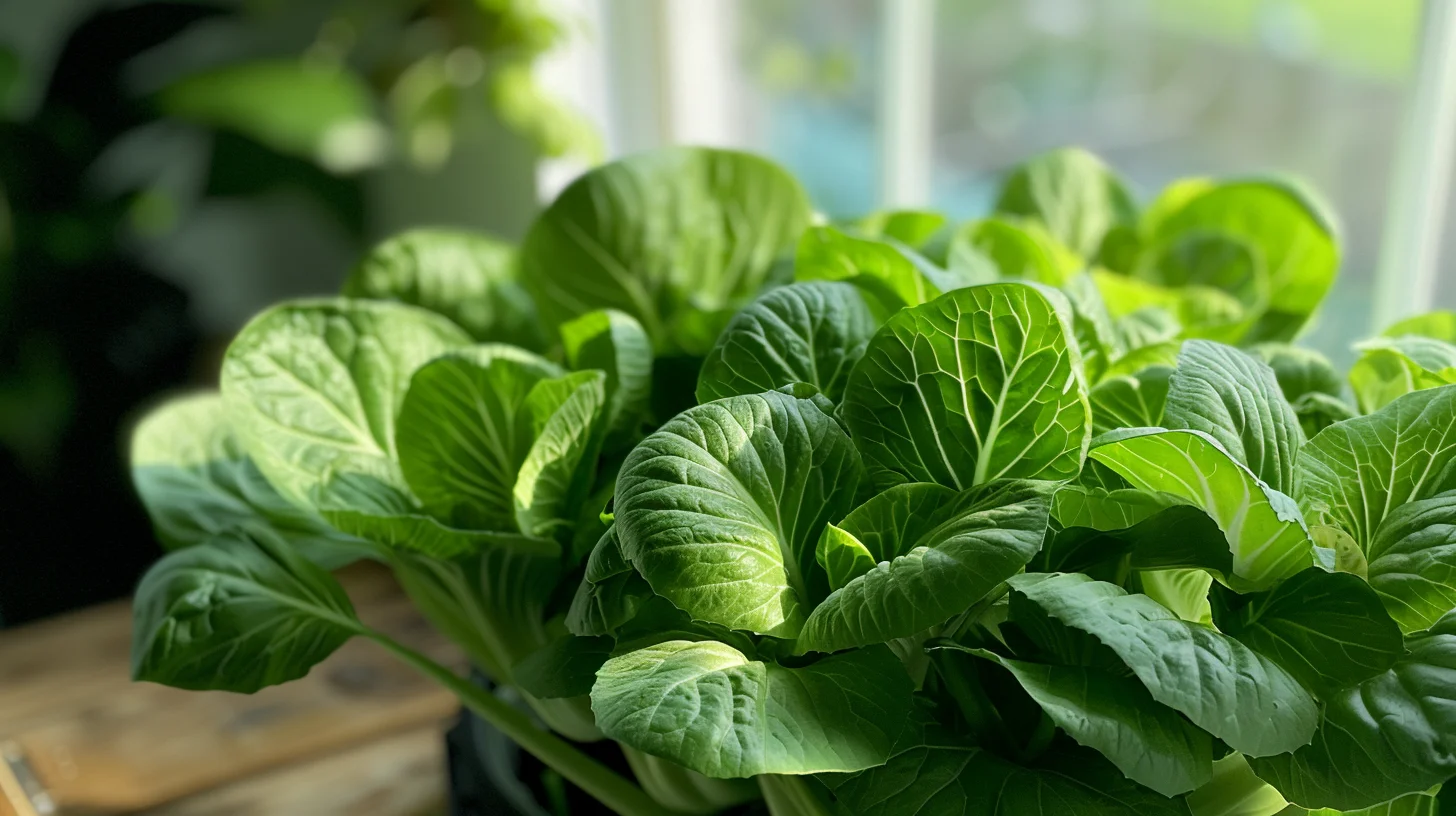
Сколько стоит диплом высшего и среднего образования и как это происходит?
Your comment is awaiting moderation.